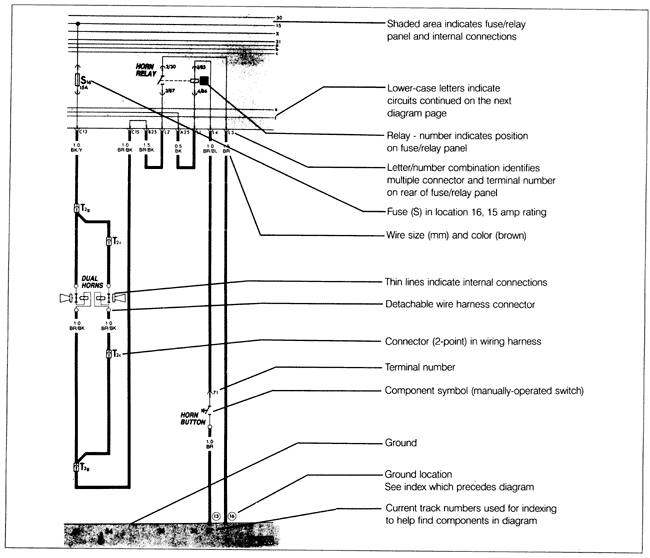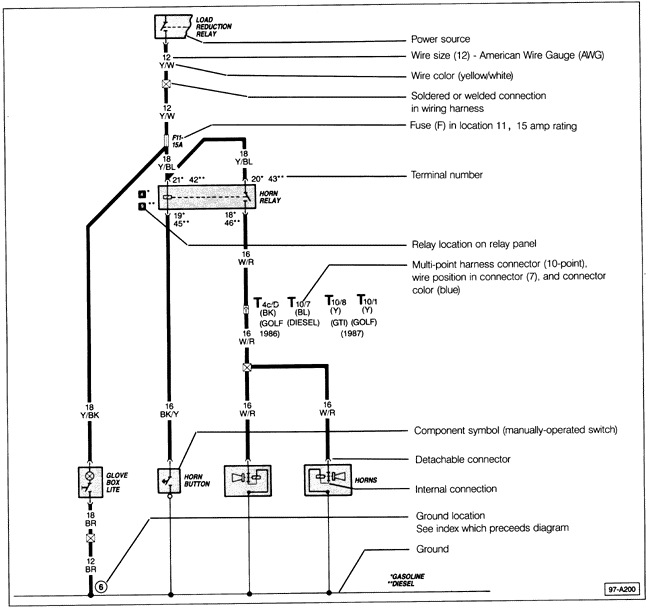3.1 How To Read Volkswagen Current Flow DiagramsThe circuit diagrams presented in this manual are organized to indicate current flow, from positive to negative, in the electrical system. This is different from other types of wiring diagrams that actually show the routing of the wiring harness. As a general rule, current flows from positive (+) at the top of the diagram to negative (-) at the bottom (which represents ground). One exception to this is the fuse/relay panel's internal ground circuit, labeled with the terminal number 31. See Terminal and Circuit Identification for further information. Fig. 3-1 and Fig. 3-2 are examples of Volkswagen current flow diagrams, showing the meanings of the various markings. These are general examples. They do not show all of the schematic symbols used. For a complete listing of the symbols, see CURRENT FLOW DIAGRAMS.


|